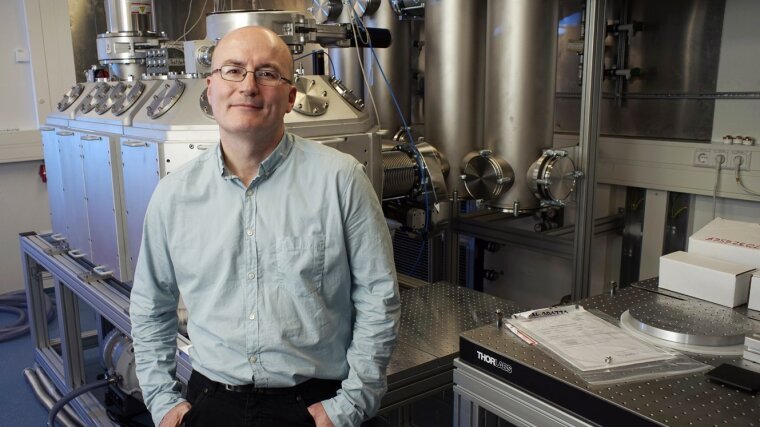
Prof. Matt Zepf.
Image: Jan-Peter Kasper (University of Jena)Prof. Dr. Matthew ZEPF
Email: m.zepf@uni-jena.de
Phone: +49 3641-9-47616
Prof. Zepf is a director of the Helmholtz Institute Jena and head of the Research Group for High Field Physics and Laser Acceleration at the University of Jena. He is
a member of the Royal Irish Academy and serves on several scientific advisory committees at major international laser facilities.
Research Areas
Prof. Zepf’s research focuses on the applications of ultraintense lasers to applications and fundamental science. Particular areas of interest are:
- The development of laser driven and plasma based particle accelerators
- Testing high field QED with ultra-intense lasers
- Development and operation of high-power lasers
- Ultrafast radiation sources
Teaching Fields
Professor Zepf teaches High Field Laser Science, Plasma Physics and Specialist courses on Plasma Driven Radiation Sources. Bachelor and Master‘s degree topics are available both experimentally and numerically.
Research Methods
In Prof. Zepf‘s group, research is conducted using a wide range of advanced methods are applied and developed for application in high power laser science.
- The development and operation of multi-100TW lasers and their diagnostics
- Numerical simulations of plasmas
- Ultrafast optical and X-ray probe pulses
- Particle detector development
Recent Research Results
Prof. Zepf’s Group has made notable achievements across the areas of high field physics and particle acceleration. Recent successes are important steps to achieving controlled injection in laser driven electron accelerators [1], where femtosecond probing elucidated the role of microscopic turbulence in the gaseous media on so-called self-injection. The ability to generate such electron beams with high power lasers allows the fundamental dynamics of electrons in electromagnetic fields to be tested with first results in the so-called radiation reaction regime demonstrated using the Astra Gemini laser in the UK [2, 3]. This work is currently continuing with collaborations based at the the Stanford Linear Accelerator, XFEL in Hamburg and a DFG consortium including CALA in Munich. Since our seminal work at the outset of laser driven proton and hadron accelerator research [4] we have developed new concepts [5] and continued to advance the field [6]. These particle radiation sources are complemented by research into intense X-ray and XUV sources exploiting the unique physical regimes accessible with ultra intese lasers [7], [8].
[1] Kuschel et al., Phys. REv. Lett. 121, 154801 (2018).
[2] Poder et al., Phys. Rev. X 8, 031004 (2018).
[3] Cole et al., Phys. Rev. X 8, 011020 (2019).
[4] Clarke et al., Phys. Rev. Lett. 84, 670 (1999).
[5] Robinson et al., New journal of Physics 10, 013021 (2008).
[6] Ma et al., Phys. Rev. Lett. 122, 014803 (2019).
[7] Lei et al., Phys. Rev. Lett. 120, 134801 (2019).
[8] Dromey et al., Nature Physics 5, 146 (2009).
